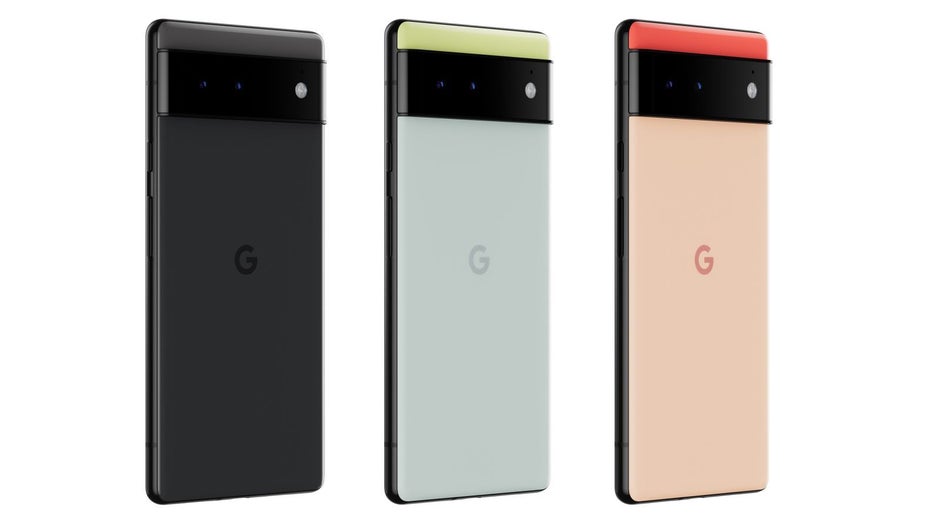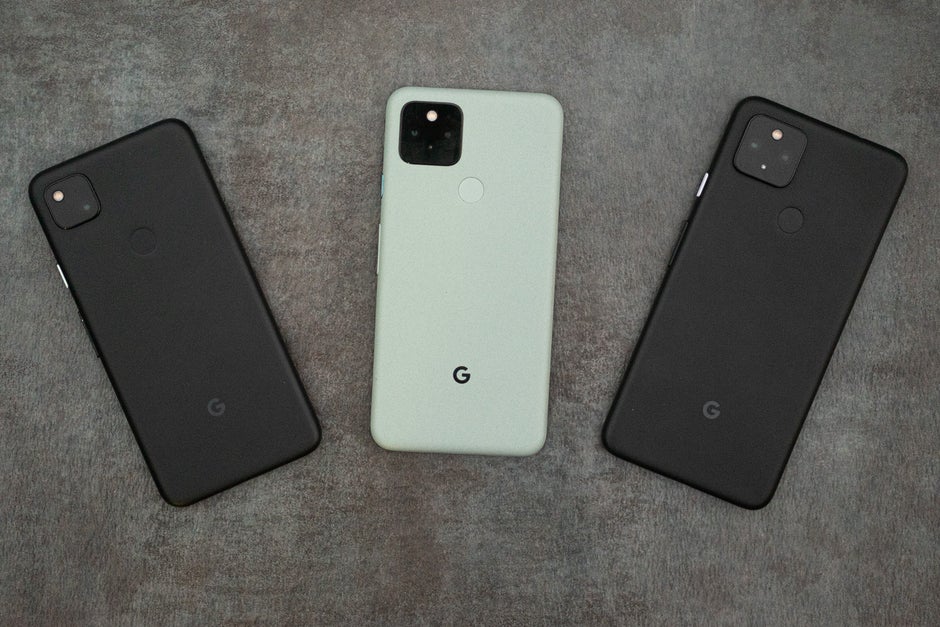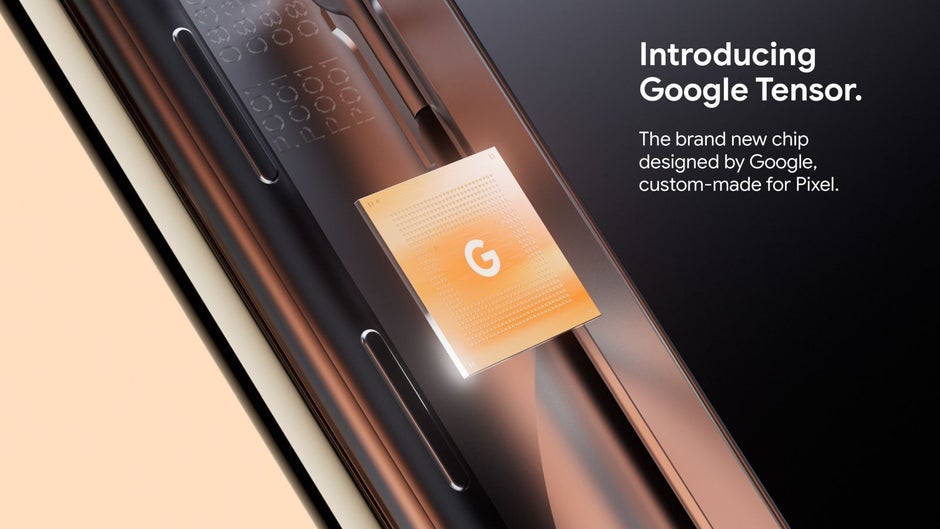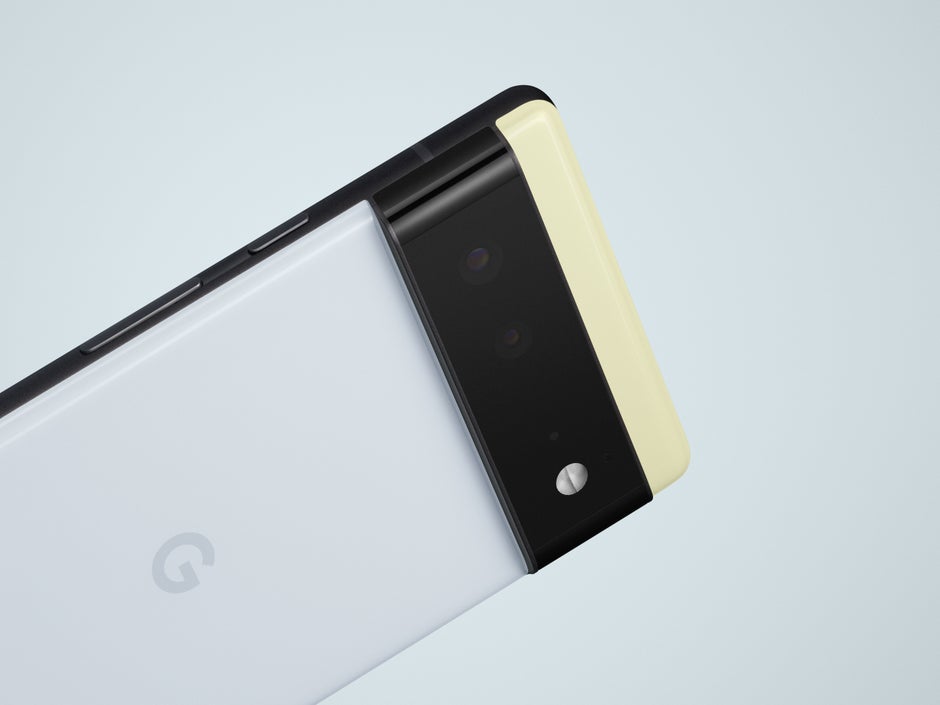Google Pixel 6 vs Pixel 5: What to expect?
Jump to section:
The radical new design of the Pixel 6 series has been officially confirmed by Google itself, as well as the new Tensor SoC that will be powering both the Pixel 6 and Pixel 6 Pro. We know some key display specs, and the camera configurations have been revealed as well. There’s one pressing question that lingers at the border of our minds, though. How does the Pixel 6 compare to its predecessor – the Pixel 5? Today we’re going to find out.
Google Pixel 6 vs Pixel 5: Design
- Tri-tone glass sandwich vs solid color bioresin/metal design

Obviously, when the design of the Pixel 6 leaked a couple of weeks ago it drove the internet crazy. Now that we finally have official confirmation, we can assess the changes. The Pixel 6 design is radically different compared to the Pixel 5. The previous generation Google flagship featured a hybrid aluminum body with a thin bio resin plastic skin on top, giving it a very distinct look and feel.

The Pixel 6, on the other hand, is using the more traditional glass sandwich design, with a camera bump (or should we say strip) stretching through the whole width of the phone’s body. The color scheme is a three-tone one, as opposed to the solid color design from the last generation, and there’s an eye-catching colorful element above the camera system.
Google Pixel 6 vs Pixel 5: Display
- 6.4-inch flat Full-HD+ 90Hz vs 6-inch flat Full-HD+ 90Hz

The Pixel 5 features a 6.0-inch OLED panel with a 90Hz display refresh rate. The big question was whether Google was going to up this and hop on the 120Hz bandwagon with the Pixel 6. Sadly, the press kit that the company released answers this question and the answer is no.

The Pixel 6 comes equipped with a 6.4-inch OLED panel with the same resolution and refresh rate as the panel found in the Pixel 5. What’s more, the additional 0.4-inches would transform into less pixels per inch in the new model.
Just like the Pixel 5, the next-gen Google flagship features a flat display but the bezels look thinner in the new model. Fans of curved displays and 120Hz refresh rates should shift their attention toward the Pixel 6 Pro, as this model comes with the aforementioned specs.
Google Pixel 6 vs Pixel 5: Hardware and performance
- Custom made Tensor chipset vs Snapdragon 765G

The hardware side of things brings another twist to the story. There were strong suggestions that Google is going to use an in-house developed chipset in the Pixel 6. XDA Developers reported that the SoC is codenamed Whitechapel and is known internally as the “GS101,” with “GS” said to be short for “Google Silicon.” As it turns out, there’s truth to this – the new, custom-made, silicone is called Tensor and powers both the Pixel 6 and Pixel 6 Pro.
The Pixel 5, on the other hand, has been criticized for using a midrange chipset – the Snapdragon 765G to be exact. And while this SoC offers decent performance, it’s not on par with top-tier silicon found in “real” flagships. The Tensor (Whitechapel) chip will likely be made in Samsung’s foundries using the chaebol’s 5nm process technology, meaning it will be much closer to the Snapdragon 888 and the Exynos 2100 in performance.
To give you an idea of the expected performance here’s how the last Pixel generation fared against the Snapdragon 888 flagship chipset.
Google Pixel 6 vs Pixel 5: Camera
50MP (Wide) + 12MP (Ultra wide) vs 12.2MP (Wide) + 16MP (Ultra wide)


The Pixel 6 sports the same dual-camera setup on the back but we don’t know any details about the sensors underneath. According to Google, both the main and ultra-wide cameras in the Pixel 6 have been upgraded and now gather 150% more light than the shooters found in the Pixel 5. The latest rumors however speculate about new sensors for the Pixel 6 – a 50MP one for the main (wide) camera, and a 12MP for the ultra wide.
Here’s a look at some pictures taken with the Pixel 5:
Google Pixel 6 vs Pixel 5: Battery
We still don’t know the performance and efficiency of the new Tensor SoC in the Pixel 6, so we can’t evaluate the battery life at this point.
Another sensitive topic is the included charger. We don’t know if there’ll be a charger inside Pixel 6’s box but rumors suggest that it’s like for Google to follow the latest trends and supply only a USB-C cable with the Pixel 6.
Google Pixel 6 vs Pixel 5: Price
The Pixel 5 price at launch was $699, making the phone kinda affordable, especially compared to other flagship phones. We don’t know anything about Pixel 6 pricing at the moment, but given all the rumored upgrades it’s doubtful that Google would want to go lower than this.
There’s no official information on pricing yet, but Google did say something about the Pixel 6 prices in its press release. According to the company, the Pixel 6 and Pixel 6 Pro “will certainly be a premium-priced products.” This statement makes us think that there will be a price increase for the Pixel 6 and Pixel 6 Pro, so we’re probably looking at something in the vicinity of $799 for the vanilla model (if not even more).
Conclusion
The Pixel 6 is shaping out to be the flagship all Google fans have been waiting for. It’s still early days but it seems that we have high hopes of calling this phone a true flagship. What about the Pixel 5 then? Well, it depends. If all the rumors turn out to be true, the Pixel 5 will have a hard time not falling into obscurity. On the other hand, it’s still a great phone and with the proper price adjustments, it can sustain itself a bit longer in the vicious tech jungle.
For all the latest Technology News Click Here
For the latest news and updates, follow us on Google News.

